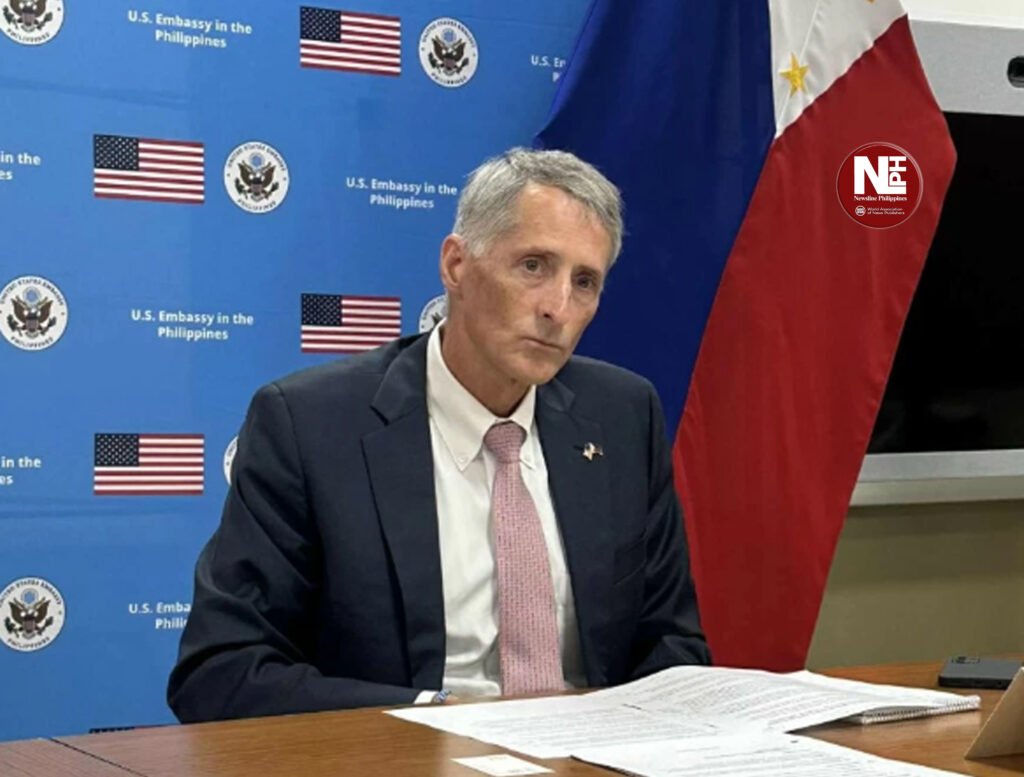
MANILA (September 9) — A top US official stated on Thursday, September 4, that Washington plans to continue providing aid to the Philippines, including initiatives to stop illegal fishing in its seas in the South China Sea, even if the United States reduces its foreign aid elsewhere.
Despite the US realigning its foreign assistance program under President Donald Trump, Jonathan Fritz, principal deputy assistant secretary for East Asian and Pacific affairs at the US State Department, stated Thursday that the Philippines would continue to be a key partner.
During a roundtable discussion at the US Embassy in Manila, Fritz told reporters, “The message that we want to convey to our Filipino friends is you guys were the first recipients of new assistance funding. I think that will sort of set a mark, and the Philippines will continue to be one of our closest partners in this space going forward.”
In order to explore the US’ expanding economic connections with the Philippines, including foreign aid, Fritz was in Manila to meet with Philippine officials and experts.
Months after President Ferdinand Marcos Jr. met with senior US officials in Washington, US Secretary of State Marco Rubio said on July 23 that Manila will get at least P3 billion ($60 million) in additional aid.
The United States President Donald Trump, who months ago ordered a comprehensive review of all US foreign assistance programs before ultimately attempting to dismantle the United States Agency for International Development (USAID), made this commitment for the first time.
With the termination of about 92% of USAID’s funds globally and the reduction of over 4,000 programs, Trump’s demolition of the agency in July proven to be extremely contentious. The 63-year-old agency was characterized by the US leader as being run by “radical lunatics.”
Since merging with the State Department, USAID has seen the elimination of the majority of its initiatives, including those pertaining to advancing human rights and democracy and strengthening civil society.
Programs that directly boost partner economies and further US security goals are the emphasis of the US’s new aid strategy.
Fritz stated on Thursday that initiatives that strengthen the Philippines’ energy sector’s resilience, upgrade infrastructure via the Luzon Economic Corridor, and strengthen the nation’s capacity to combat illegal fishing in its waters will be the main emphasis of US foreign aid to the Philippines.
Being close to important maritime lanes in the South China maritime is one of the reasons why the Philippines, the US’ oldest treaty partner in Asia, is seen as crucial to Washington’s security interests.
Focusing on Illegal Fishing
In order to monitor and report unlicensed vessels in Philippine waters, the United States plans to sponsor initiatives that will collaborate directly with Filipino fishermen.
“One of the key areas where we will be focusing our foreign assistance programming going forward is helping the Philippines better monitor illegal fishing,” Fritz stated.
According to the US source, these initiatives will be carried out in regions “north and west” of the country, including the South China Sea.
Although Fritz did not specifically mention China on Thursday, Chinese ships, particularly its mysterious maritime militia vessels, have regularly flocked into these waterways.
“I know that the fisheries industry here in the Philippines is an important part of the economy… But there are some neighbors, and some more than others, that I know are basically stealing the fish resources of the Filipino people,” Fritz stated.
The program’s goal is to empower local fishermen to serve as “frontline eyes and ears” who will provide local and national agencies with up-to-date information on illegal fishing, habitat destruction, coral reef damage, and marine pollution.
The overall goal is to find foreign ships that are “taking resources of the Philippine people without their permission,” Fritz continued.
Infrastructure and energy
Of the $63 million announced in July, $24 million will be used to improve the resilience of the Philippine energy and electricity sectors, including support for civil nuclear power and renewable energy.
According to Fritz, these energy sources would look at “the full spectrum of energy availability” and be “less vulnerable to supply disruptions, whether of imported coal or gas.”
Through infrastructure initiatives targeted at enhancing connectivity, an additional $15 million (P825 million) will promote private sector development in the Luzon Economic Corridor.
By enhancing highways and railroads, the corridor seeks to “provide a business environment that is conducive to further investment” by facilitating corporate operations and drawing in both foreign and domestic investment, Fritz continued.
Fritz clarified that the Trump administration’s new foreign assistance program will maintain humanitarian and health-related initiatives in spite of overall aid cuts.
He stated that “we did not end our humanitarian and lifesaving assistance,” adding that funding for the health sector would continue to be “one of the key areas where we will continue to be a very reliable and forward-leaning assistance partner.”
According to the US official, the initiatives will cover HIV-AIDS, TB prevention, global health security, and disaster preparedness.
Fritz also described the size of the US-Philippines economic relationship, stating that since 2012, overall US-Philippines economic flows had totaled “somewhere in the neighborhood of $256 billion.”
This amount encompasses development assistance, philanthropic contributions, foreign direct investment, and help from multilateral organizations such as the Asian Development Bank and the World Bank, of which the United States is a member.
The Trump administration’s massive aid freeze earlier this year caused scores of regional development projects to be suspended and then terminated. The freeze has affected at least 39 programs, including a Bangsamoro education project that was scheduled to run until 2029, despite the fact that the Philippines is not one of Asia’s top receivers of USAID assistance.

